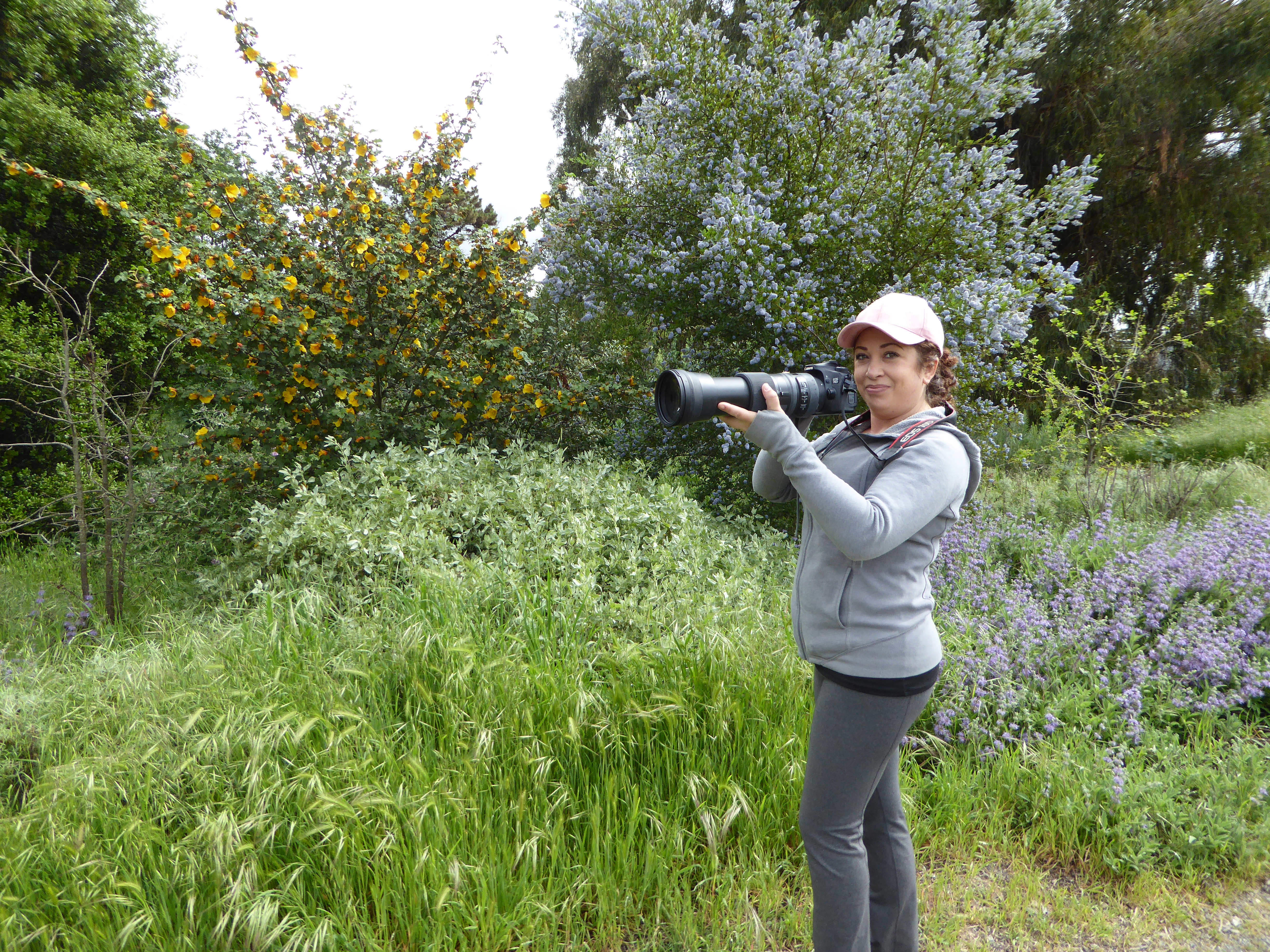

When Erica Fleniken moved from Tampa, Florida, to Santa Clara in 2013, her discovery of Ulistac Natural Area (www.ulistac.org) led to a new passion in her life.
“My husband and I thought it would be wonderful to have nature so close by, but we never expected this,” said Fleniken, who walks to Ulistac from her home.
“We thought Ulistac was just going to be a small city park. Instead, the very first time we stepped in, we forgot the cars and planes overhead, we forgot everything but where we were.”
Fleniken was so enthused about the 40-acre restored, natural area that she became a lead volunteer and its nature and wildlife photographer. Birds are her forte.
“I have become a bird photographer by default. It was never my intent,” said Fleniken. “It just happened given the vast population of birds at Ulistac.”
She is a patient and keen observer, posting striking photos with educational captions almost daily on Ulistac’s Facebook page. Her photos have appeared in The Weekly.
“Your pictures continue to bare the soul of Ulistac,” commented Dan Schumacher from San Jose on Facebook, below photos of a red-tailed hawk evading a crow’s attack.
“Birding is definitely a new passion that I have discovered,” said Fleniken, who has always been an outdoors person. “I appreciate how birding has made me feel even more connected to nature.”
Fleniken started dabbling in photography in high school when her dad gave her a starter camera. Now, almost daily, Fleniken can be spotted at Ulistac, camera in hand.
A petite five-feet tall, she hefts a camera that weighs seven-and-a-half pounds. Its zoom lens extends it to about 19 inches — almost a third of her height.
“The size was initially challenging. I struggled with keeping my arms from shaking,” she said. “But with experience, I learned better ways of holding the camera to reduce stress on my arms. Over time I noticed that my arms became stronger.”
Fleniken dedicates 10 to 15 hours weekly to tracking, photographing and documenting Ulistac wildlife. On a good day in about three hours, she takes hundreds of photos, about 80 percent of birds.
The most time-consuming part of posting on the Ulistac Facebook page is sorting and processing her photos, deciding which to share.
“Documenting this wildlife helps prove that we are creating a healthy and thriving natural California habitat [at Ulistac], and individuals can do the same with their own backyard to help protect the wildlife, including bees and butterflies, by simply plating native gardens,” said Fleniken.
“I feel that what I do helps promote Ulistac but also helps educate people on what they can do to help out — like planting milkweed for the Monarchs.”
“Before I started taking pictures, I’d walk past very quickly and wouldn’t notice things,” said Fleniken.
“But if you stay still long enough, you’d be really surprised by what you might see. It’s definitely a practice of patience.”
Californians' confidence in their public schools and approval of how Gov. Gavin Newsom and the…
Rotary Park is a neighborhood playground located a block from Santa Clara City Hall. For…
“Maya Gurantz: The Plague Archives,” at the de Saisset Museum on the campus of Santa…
Two people suspected in multiple bank robberies throughout the Bay Area pleaded guilty to the…
A group of crooks that rammed a local jewelry store with a stolen car absconded…
Sports and infrastructure will be Santa Clara’s focus over the next year. At the Santa…